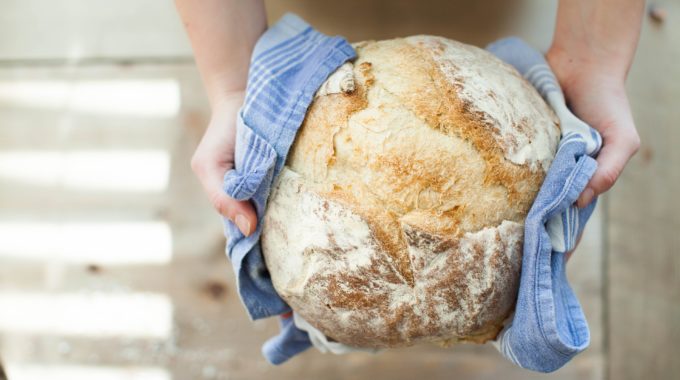Khorasan: the hottest thing in baking
The “seven ancient grains” – including spelt, freekeh and bulgur – have all enjoyed popularity in the last few years due to their unique flavours and impressive health properties. However, there’s one grain on the list that’s been somewhat obscure in Australia… until now. Khorasan wheat has a grain twice the size of modern-day wheat and is becoming coveted among top bakers for its rich, nutty flavour. High in zinc, phosphorus, magnesium, vitamin B1 and vitamin B3, it’s also a good source of protein and fibre.
In Australia, Khorasan wheat is produced exclusively in Queensland by organic grain millers Kialla Pure Foods under the brand name Kamut.
“Over time many strains of Khorasan have been cross-pollinated with other grains, however under Kamut, this is the purest strain,” says Kialla Managing Director, Quentin Kennedy.

Prophet’s wheat
September is Australian Organic Awareness Month, which highlights the achievements of the organic industry as well as organic products such as Kamut, which have been officially certified with Australian Certified Organic’s BUD logo.
Kennedy says this year Kialla, which also produces other organic grains and flours, has had its best period ever, thanks to the home baking craze that’s arisen out of COVID lockdowns.
“The fact that this is such an ancient grain in a natural, organic form that’s not that dissimilar to what people would have been eating thousands of years ago is highly appealing for many people,” he says. “Especially foodies keen to try different things.”
The history of Khorasan wheat is a colourful one. It most likely originated in Mesopotamia many thousands of years ago. Legends even exist of the grain being found in Egyptian tombs. The grain got its name from the historical province of Khorasan. This included a large portion of north-eastern Iran into Afghanistan and Central Asia.
Farmers in Turkey call the grain “camel’s tooth” because of its shape. Others call it “prophet’s wheat” in reference to a legend that Noah brought the grain with him on his ark.

How to use it at home
Top Sydney bakery Berkelo has a Khorasan, wheat, toasted malt and honey loaf which is their best seller. Baker and Head of Food Development Matt Durrant says the business first started using Khorasan five years ago. The popularity of the loaf only continues to grow.
“The Khorasan is quite nutty, while the slight bitterness of the toasted malt is offset by the honey,” he says. “So it’s a really interesting, complex flavour profile. Khorasan also has the ability to change the moisture feel of the loaf. So even though we use less water in this loaf compared to others, there’s more moisture in the crumb. So it stays soft in your mouth.”
Durrant recommends that any home bakers wanting to use Khorasan for the first time should start by substituting one cup of wheat flour for one-third of a cup of Khorasan flour and two-thirds of a cup of wheat flour.
“We’ve made loaves with 100 percent Khorasan, which tastes amazing,” he says. “But like all baking, trying something new can involve trial and error. It can take a while for a loaf to actually ‘work’ in the kitchen. So, I would say, see how a loaf goes using one-third Khorasan first and note if you like the taste. We personally love it, and so do a lot of other people.”
You can find a Khorasan retailer near you at kiallafoods.com.au









